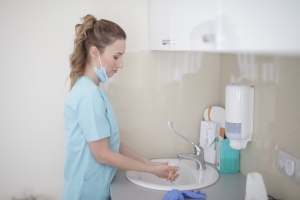Birth Leave Report from the Institute for the Equality of Women and Men (IEWM): "Work for the next government"
The Birth Leave Report proves the usefulness of increasing birth leave to 20 days, a measure introduced by the Vivaldi government. However, there is still a lot of work to be done to really work towards full gender equality within families, says State Secretary for Equal Opportunities Marie-Colline Leroy.

Birth leave incrementally increased from 10 to 20 days
In December 2020, the Vivaldi government decided to incrementally increase the number of days of birth leave from 10 to 20 days. The report by the IEWM shows that this was an important measure to achieve more gender equality within families and, most importantly: increase the involvement of fathers and co-mothers right from the start of the child's life. Indeed, studies agree that the presence of the father or co-parent in the first months of the child has a positive impact on the well-being of the child, the mother and her return to work State Secretary Marie-Colline Leroy: "I thank the Institute for the thorough study. I am pleased that the proportion of dads and co-parents taking their birth leave in full is on the rise (86% of employees and civil servants in 2021 versus 71% in 2010). Among the self-employed, it is 53%. This is an important step towards a more equal distribution of care responsibilities within the family."
Need for a better division of tasks within families
Yet the state secretary points out that there is still much work to be done. A fact sheet (2020) from the IEWM shows that 46% of women make concrete adjustments to make work-life balance feasible, compared to 21% of men. 88.4% of men work full-time, while only 54.8% of women work full-time.
As for parental leave, a leave you can take until the child is 12 years old, there too the figures show a large gender imbalance. Still more women (65%) than men (35%) opt for parental leave. In 2022, 30,402 fathers used the system in Belgium. That does double the figures in 2013 when only 14,849 men took parental leave.
Leroy: "The Institute's study shows that there is still great inequality in the distribution of care responsibilities. I support the Institute's proposal to make birth leave mandatory. More than 80 per cent of respondents also indicated this. Making birth leave compulsory also simultaneously removes the stigma experienced by some fathers and co-mothers. Taking birth leave is in everyone's interest. However, we do need to explore how to compensate for the loss of wages for the lowest wage earners so that everyone can enjoy birth leave carefree. Yet we should not be blind that such a measure is only one piece of the puzzle. At the same time, the study shows that there is still a lot of work to be done to achieve true gender equality, in terms of division of labour in the household and reactions from the environment."


